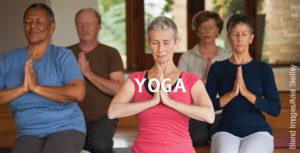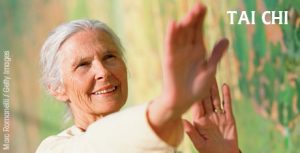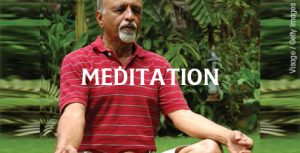Perhaps your nest is newly empty, or your progeny took flight decades ago. You may have retired, lost a spouse or simply realized that life is too short to dust any more square footage than absolutely essential. Regardless of the impetus, you’ve forgone the massive “McMansions” of your younger years and opted for smaller, more compact living arrangements. Unfortunately, not only have you downsized your physical living space but also the volume of your surrounding “bubble,” that buffer zone between you and your neighbors. That half an acre or more between your home and the next is now a shared wall. Fences make good neighbors; thin walls not so much.

Astronauts Edward H. White II (left) and James A. McDivitt inside the Gemini IV spacecraft wait for liftoff.
Studies on astronauts have found that close proximity and lack of privacy on board spacecraft can have marked ill effects on temperament, leading to anxiety and even depression.
“Living in such close quarters magnifies the effects of incompatibility, annoying habits, irritating mannerisms, and other sources of interpersonal friction.(1)” Sound familiar?
Energy From Space
In tight-knit communities, finding your own quiet place in which to recharge your batteries can be a real challenge. Fortunately, while we may be restricted physically, we can create infinite room mentally, and in that vastness find the peace and energy that will renew your soul.
Several traditional Eastern practices, including yoga, tai chi and meditation, offer opportunities through which we can assume a feeling of mental and emotional abundance in the tiniest of physical spaces.
The Way of the Yogi
Yoga, in various forms, is practiced by cultures across the globe. The only requirement is a space about the size of an average closet.
“Yoga is an amazing way for people of any age not only to maintain physical flexibility and range of motion, but also to remain centered and enjoy a clear, peaceful mind,” says Melinda Alexander, a yogi and instructor based in Makawao, Hawaii.
 One of the tangible health benefits of yoga, especially the classic hatha yoga style, is the way it gently increases fitness and develops a stronger mind-body connection. Hatha yoga focuses on slow stretching, basic yoga poses and breathing techniques, often punctuated with some seated meditation. Its gentleness makes it ideal for someone who has not exercised much or has physical limitations of any sort.
One of the tangible health benefits of yoga, especially the classic hatha yoga style, is the way it gently increases fitness and develops a stronger mind-body connection. Hatha yoga focuses on slow stretching, basic yoga poses and breathing techniques, often punctuated with some seated meditation. Its gentleness makes it ideal for someone who has not exercised much or has physical limitations of any sort.
Vinyasa, sometimes referred to as “flow yoga,” offers a faster pace than hatha, with poses connected more fluidly by dance-like movements. Breathing is a significant focus in this tradition, as moving from one pose to another is synchronized with one’s breath, creating a gentle dance between the inner and outer bodies.
Stress Reduction in Motion
Tai chi originated as a means of self-defense, but as the Mayo Clinic describes “has evolved into a graceful form of exercise that’s now used for stress reduction and a variety of other health conditions. Often described as meditation in motion, tai chi promotes serenity through gentle, flowing movements.”
 In its essence, tai chi is a series of movements that flow from one to another in a slow, rhythmic manner. As with vinyasa yoga, tai chi often looks like a slow dance, and practitioners have described the rhythmic movements as not only calming, but also refreshing, with a side effect of improved balance and increased flexibility.
In its essence, tai chi is a series of movements that flow from one to another in a slow, rhythmic manner. As with vinyasa yoga, tai chi often looks like a slow dance, and practitioners have described the rhythmic movements as not only calming, but also refreshing, with a side effect of improved balance and increased flexibility.
It’s All in Your Head
To expand your sense of self far beyond the limits of your physical environment and derive a state of calm without any measurable degree of movement, meditation is an ancient and ever-popular choice. The many methods of meditation share an emphasis on posture, breathing, quiet reflection and a point of mental focus. Various techniques will guide the practitioner through a heightened level of awareness, focusing on emotions, thoughts or physical sensations with the individual encouraged to simply observe the emotion/thought/sensation without judgment. Defined as a mind-body practice, meditation is considered a complementary component to traditional medicine, and therefore many people suffering from acute and chronic illness successfully incorporate it into their care plan.
 Mindfulness meditation has come into favor during recent years, particularly in western countries. The central concept of mindfulness is to nurture a moment-by-moment sense of the present, paying attention to such details as the way food tastes or the sounds around you. Yet rather than hold onto those observations, the practitioner acknowledges the details in a non-judgmental way and then releases the thoughts. Jeanette Honermann, a certified iRest instructor in San Antonio, Texas, works with clients using the practice to increase awareness and an overall sense of well-being.
Mindfulness meditation has come into favor during recent years, particularly in western countries. The central concept of mindfulness is to nurture a moment-by-moment sense of the present, paying attention to such details as the way food tastes or the sounds around you. Yet rather than hold onto those observations, the practitioner acknowledges the details in a non-judgmental way and then releases the thoughts. Jeanette Honermann, a certified iRest instructor in San Antonio, Texas, works with clients using the practice to increase awareness and an overall sense of well-being.
“Meditation offers aging adults a counter effect to aging and close quarters through focused activity and deep relaxation, which promotes longevity and happiness,” says Honermann. As one of her students explained, by practicing mindfulness meditation, she is far less likely to be annoyed by “the little things.”
Togetherness, With an Out-Clause
Although living with neighbors in close proximity offers wonderful opportunities for connecting, sharing and collaborating, they also highlight the need of every individual to occasionally disconnect and enjoy some alone time. Meditation in particular has proven so effective for alleviating stress, that the U.S. military has incorporated the practice into their training programs.
Likely your stress level doesn’t approach that of Marines in combat conditions, but certainly there are times when it seems to be. Consider this: In a 2008 study conducted among Marine reservists, 31 were taught breathing exercises and yoga poses, how to focus their attention, and how to prevent their minds from wandering. Researchers found that all 31 of them reported improved moods and greater attentiveness — and that the individuals who spent additional time meditating on their own saw the biggest improvements.(2)
Even when physical space is in short supply, mental and emotional vastness are in abundance and easily accessed through traditional practices born of Eastern traditions. Whichever practice you find appealing, you’ll likely be able to find a variety of classes in your community where you can get started.




Sources